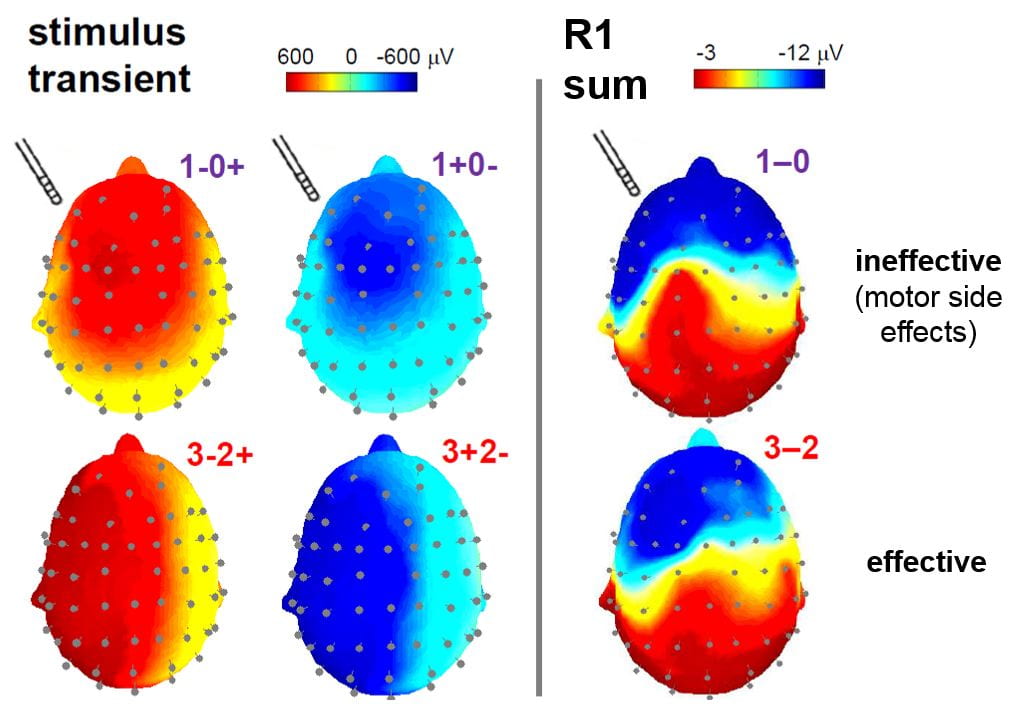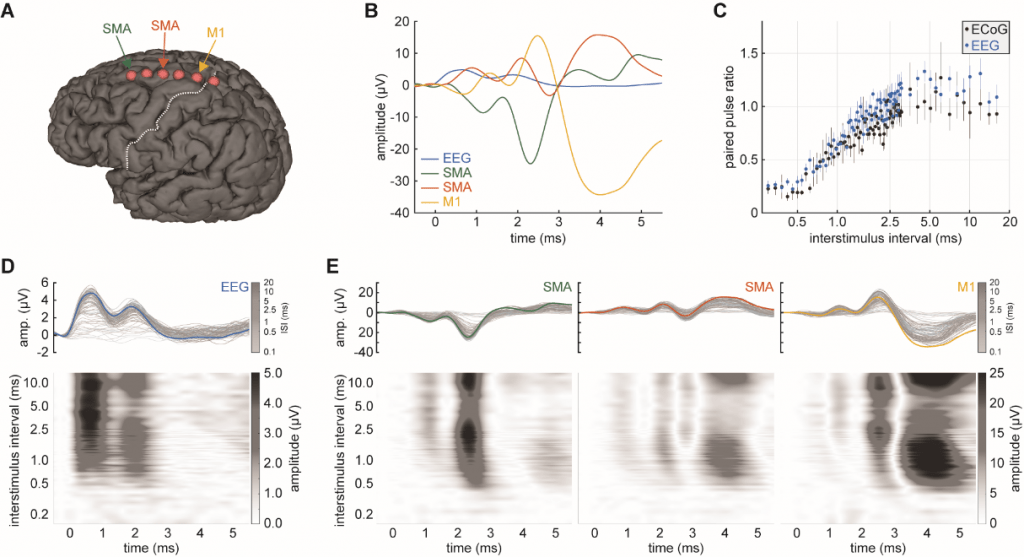

(A) Electrode schema. (B) Post-hoc reconstruction of 3T PRISMA brain images, with ECOG contacts co-localized from intra-op O-arm 2 CT images. (C, D) In two participants, stimulation was delivered at 5 mA from each contact, using the remaining contacts as the current sink. Additionally, segmented rings were stimulated together to create a “virtual ring” configuration. Note the gradient of M1 to S1 activation across the directional contacts in participant 1 (C), and that both circular and virtual rings often elicit larger ERPs.

